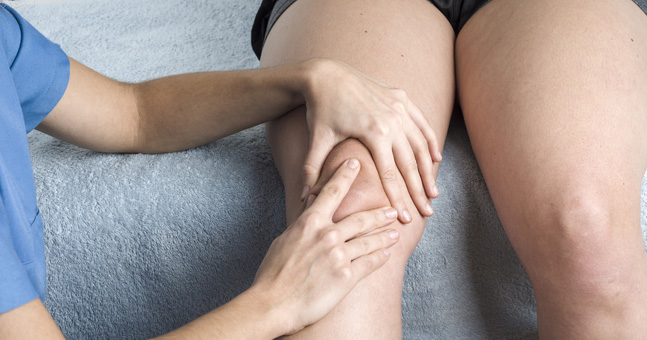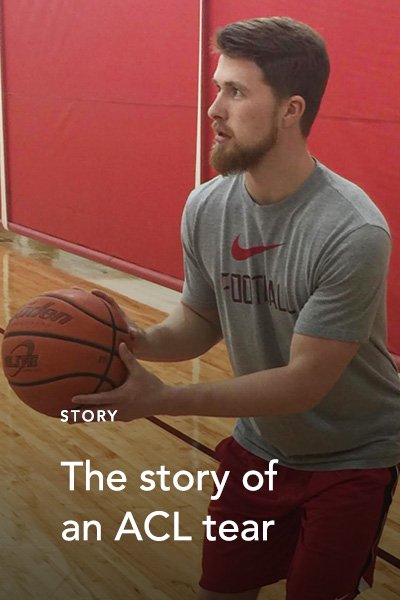Re-Alignment Procedures
Read more below about this treatment option below.
What is a re-alignment procedure and how can a knee osteotomy provide relief?
A knee osteotomy is a surgical procedure performed in men and women who have arthritic damage or cartilage injuries in just one area of the knee. The term “osteotomy” literally means “bone cutting,” and in a knee osteotomy surgery, a portion of the thigh bone (femur) or the shin bone (tibia) is cut to allow a wedge-shaped piece of bone to be removed or inserted. By “reshaping” the leg bones, a knee osteotomy relieves pressure in specific areas of the knee joint, reducing pain symptoms and delaying the need for a total knee joint replacement.
Why is a knee osteotomy performed?
The ends of the femur and tibia are covered in a slick layer of cartilage that helps the joint move freely and prevents wear and tear that can cause friction, pain and inflammation. Osteoarthritis occurs when this slick layer becomes damaged, usually from wear and tear, but sometimes from trauma. Sometimes, the wear on the joint surfaces develops unevenly, and only portions of the joint are affected. Over time, damage in these areas decreases the space between the tibia and femur, resulting in a bowed leg shape that creates localized areas of friction and cartilage damage. Osteotomy helps straighten the bow by removing a wedge-shaped piece of bone in a specific portion of the leg bone.
Most knee osteotomies are performed on the tibia to correct a “bowlegged” defect that places a lot of uneven stress and strain on specific areas of the knee joint. However, osteotomies can also be performed on the thigh bone to correct uneven joint strain and pressure in people who are “knock-kneed.” High tibial osteotomy removes a wedge-shaped portion of the shin bone, straightening the leg, restoring a more normal joint space and relieving pressure on the knee joint. Realignment enables the joint to distribute weight more evenly so painful symptoms are relieved and wear and tear are reduced.
In patients that have either mal-tracking of the knee cap or a cartilage defect in the front compartment of the knee, a different type of osteotomy is performed. This procedure is called an anteriomedialization tibial tubercle transfer or AMZ for short. The surgery is performed on the tibial tubercle, a bony elevation located below the kneecap (patella) where the patellar tendon attaches that connects the kneecap and the tibia. The tibial tubercle is moved into a position that improves knee function and decreases pressure on the cartilage. The approach used in your procedure will be determined by a comprehensive physical exam of your knee, diagnostic imaging results, and a review of your symptoms, your medical history and your lifestyle.
What happens during a knee osteotomy procedure?
 The steps used in your osteotomy will vary depending on the approach and whether your surgery is being performed on the tibia or the femur. Some procedures are performed on an outpatient basis while others require a one-night hospital stay. During most procedures, an incision is made and a wedge of bone is removed. Then the bone ends are brought together and secured using surgical plates and screws. In other procedures, a wedge of bone taken from your pelvis or from a donor may be added to your leg bone to help straighten it. AMZ procedures use a different approach to alter the way your kneecap fits and moves when the knee is flexed and bent.
The steps used in your osteotomy will vary depending on the approach and whether your surgery is being performed on the tibia or the femur. Some procedures are performed on an outpatient basis while others require a one-night hospital stay. During most procedures, an incision is made and a wedge of bone is removed. Then the bone ends are brought together and secured using surgical plates and screws. In other procedures, a wedge of bone taken from your pelvis or from a donor may be added to your leg bone to help straighten it. AMZ procedures use a different approach to alter the way your kneecap fits and moves when the knee is flexed and bent.
Once your surgery is complete, you’ll need to use crutches and sometimes a brace for a few weeks while the bone heals and “knits” together, and you’ll have physical therapy for several months to strengthen your thigh muscles and restore flexibility and range of motion in your knee. In most cases, you can expect to resume your normal activities within three to six months.
Am I a good candidate for knee osteotomy surgery?
Knee osteotomy can be a good option for active, younger patients (typically those under age 60) with osteoarthritis damage or cartilage problems restricted to one specific portion of the joint and who may be considered too young for a total knee replacement. Most patients who have knee osteotomies have symptoms that are brought on or exacerbated by activity or by prolonged periods of standing, and they should be able to bend the knee 90 degrees and fully extend the joint.
Start relieving knee pain today.
Knee pain is one of the most common orthopedic complaints among both men and women, especially athletes and others who lead physically active lives. Dr. Geoffrey Van Thiel is skilled in knee osteotomy procedures and other techniques aimed at addressing the underlying cause of knee pain, helping patients from the greater Chicago region get back to their active lives. Take the first step toward relieving your painful knee symptoms.
Call OrthoIllinois at 815-398-9491 and schedule a consultation with Dr. Van Thiel today.




